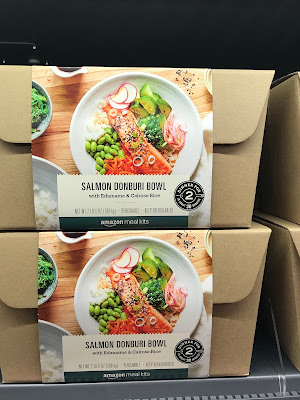Demographics continue
to drive change in everything we do. The
change in population
mix including fewer married couples, more people living alone, smaller
household size and multi-generational households each are creating new
opportunities for food retailers and packaging companies.
Foodservice
Solutions® Grocerant Guru® is
constantly asked why is the Grocerant niche filled with Ready-2-Eat and
Heat-N-Eat fresh food driving change in every aspect of the retail food space? Demographics
are changing Gen Z, and Millennials spend more
often on food than any other demographic in the U.S.
Packaged Facts in an
importnat report on food and beverage packaging entitled Food and Beverage
Packaging Innovation in the U.S.: Consumer Perspectives, published by Packaged Facts outlined five key
drives shaping packaging.
The five drivers are:
1. Targeting
Millennials:
While millennials may seem like a broad and amorphous target, numerous studies
show there are some commonalities. Millennials like fresh, less processed
foods, as demonstrated by their preference for “fast casual restaurants that
offer freshly prepared foods, and shopping the perimeter of grocery stores
where fresh and non-packaged foods can be found.”
2. Smaller Packages
are a Big Trend in Packaging: With one- or two-person households
representing 61 percent of all U.S. households, packages sized to serve one or
two people have become a big trend in packaging. Such formats include
single-serve packaging, meals for two, multi-packs of individual portions, and
resealable packaging. The rise in smaller-footprint stores is also influencing
this trend.
3. Packaging for
Convenience:
Convenience is a major selling point for food and beverage packaging. Features
such as ease of opening, re-seal-ability, portability, lighter weight, and
no-mess dispensing are packaging benefits that influence consumers’ purchasing
decisions positively.
4. See-Thru Packaging
Can Boost Sales:
More and more marketers are putting their products in packages that are see-thru
or have see-thru windows. Transparency in packaging taps into consumer desire
for transparency about how food and beverages are produced, both figuratively
and literally. Companies that are transparent about their ingredients,
sourcing, and business practices are reaping the benefits in consumer goodwill
and trust.
5. Eco-Friendly
Packaging Growing:
In the past few years, single-serve bottled water has come under attack by
environmentalists as epitomizing the wasteful nature of modern society. As a
result, some marketers of bottled water have stepped up their introductions of
more sustainable packaging. Likewise, Packaged Facts believes that improved
recyclability and sustainability will become ever more important to the success
of the single-cup brew market — if not a cost of entry — as this business
matures. In the past two years, several American and Canadian marketers have
introduced more environmentally friendly designs for use in K-Cup brewers.
Success does lave clues and have the right packaging helps drive
success. The Grocerant niche filled with
Ready-2-Eat and Heat-N-Eat fresh prepared food will continue to drive change in
all areas of retail food service. Do you
know where most meals are consumed? Where are you selling meals?
Are you ready for a
Grocerant niche program assessment? Grocerant Scorecard? Outside eyes can drive
top line sales and bottom line profits.
Visit: www.FoodserviceSolutions.us or reach out to our own Grocerant Guru®, Steve
Johnson today for success clues at: 253-759-7869 Steve@FoodserviceSolutions.us
























